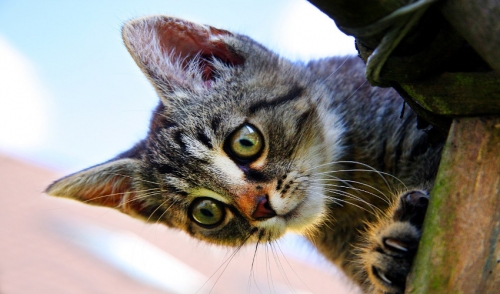{article.name}
Stay Informed
How To Train Your Cat

- Share this:
- Share on Facebook
- Pin on Pinterest
- Tweet on Twitter
Many pet owners are under the impression that cats can’t be trained because they do not respond the same way that dogs do. However, any animal with the proper behavioral reinforcement can be trained. Cats are very intelligent animals and can be trained to do many tricks and behave in a way that you see fit. I’m not saying that training a cat is easy, but it can be done. It will require a lot of patience and some creativity, but your cat will respond to training.
To begin, you must first understand your cat. Cats are nothing like dogs. They are not as social and do not have the same tendencies. Dogs were bred to be companions to humans whereas cats were bred to help get rid of vermin. Cats are hunters and they are independent in the way they behave and react to people. They don’t seek attention or motivation from their owners. The simply go about as they please, but training your cat is important because it has certain benefits such as keeping your cat from making messes and damaging your home when you are gone.
When training your cat, be sure to use tasty treats. Don’t just use any old treat, but treats that it really likes so that it responds in a positive manner. For example, to teach your cat to sit, use the treat to direct its body to the proper position. Hold the treat in your hand right at your cats nose and slowly move it in an arc just over his head as the cat begins to sniff the treat. Your cat will follow this arc motion with their head and as their chin begins to rise, their butt will go down into the sit position. Once your cat finally assumes a seated position, praise your cat and give it a treat. Repeat this process several times until your cat begins to sit automatically and on command. Be sure to use treats and follow repetition for every trick you wish for your cat to learn. The key to training your cat and understanding its behavior is making sure you reward your cat excessively when it does the things you want it to do. Also, make sure its experience is unpleasant regarding the things you do not want it to do. Furthermore, if the cats training experience is not pleasurable, then your cat will not respond well. Keep in mind that while training your cat, it responds very poorly to punishment. Depending on your cats’ temperament, punishment and negative reinforcement can create stress, which leads to further misbehavior. Punishment can also lead your cat to avoid you and learn to run away in your presence.
Training your cat requires constant practice, persuasion, and reward based reinforcement. If you are having trouble with your cats’ behavior and are truly devoted to teaching it various tricks, consult with a trainer in your area. Just be sure that no matter what, the training of your cat is handled with persistent and positive reinforcement.
Special Offers
We are constantly adding new specials to our site. Be sure to check back often!




Comments